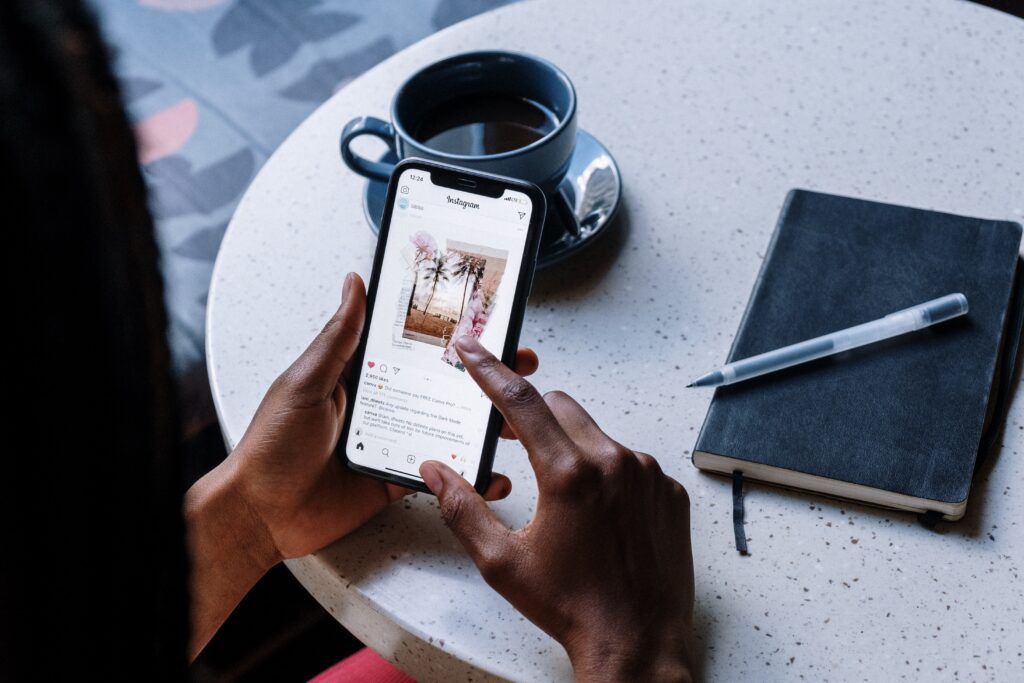Skift Take
Feedback is an essential development and improvement tool, but submission rates can be low. Here are 15 ideas to collect it more effectively for your event.
Understanding how your attendees are feeling about your brand or event is essential. It helps in improving user experience for the future. The more constructive feedback, the better. No feedback is bad feedback. It allows you to understand the areas you need to work harder on next time. Even if it is negative, it serves as valuable input for improvement. The problem is, getting feedback from attendees can be difficult, particularly if you are looking for something more in depth because it can be time consuming and no one wants to interrupt their event experience. However, there are plenty of ways to incorporate quick and easy satisfaction surveys at your event, as well as longer term feedback, which you can incentivise. Here’s some ideas for all event types to get you started.
Types of Event Feedback
Instant – This involves getting live or real-time answers that are quick and easy for the attendee as well as yourselves when it comes to compiling the data and tends to be the favoured or most likely to get answers with minimal effort. Generally instant feedback are yes or no/good or bad questions that are one way or the other.
Delayed – More valuable for the event organisers but time consuming for the attendee. Incentives can help increase feedback rates. These are the opportunity to involve in depth and more complex questions.
-
Low-Tech Methods

Gain some snapshot feedback via a simple and no-tech show of hands to gauge the mindset of your attendees immediately. Don’t ask pointless questions such as “raise your hand if you have enjoyed the event”. Instead pick the questions well and ask quick fire questions such as “raise your hand if you have met at least one new contact today?”. Also ask “raise your hand if you have learnt something today which will change your way of working in the short or long term?”.
Ensure that these do not run on too long. You can make them less obvious by adding some fun or alternative questions to keep attendees engaged.
Alternatively you could share red and green cards in the delegate bags for a visual photo opportunity or use meeting design techniques such as body voting.
-
Live Social Media Updates

Social media is where your attendees are likely to talk about your brand or event. Monitor your major accounts to see if you have been mentioned or tagged. Respond accordingly to engage with your audience and manage your online presence. You can also ensure people can “check-in” at your event. This way, you know which attendees are there and what they are saying. A social wall at the event can be a fun and interactive way for attendees to provide feedback.
You can also create polls on Twitter. Use the Facebook emoticons (Like, Love, Wow) for people to feedback their answer or preference.
-
Facial Recognition
The technology exists to track the feelings of your attendees via facial recognition. Data from cameras placed around the event can recognize attendees. The system can report back on how they are feeling based on what their face is telling. Neat!
-
Event Feedback Buttons
Have stations around your events near specific areas you want feedback on or simply the exit. These stations should have buttons to click, answering a question.
Alternatively, you can opt for emotion buttons signalling happy or sad which can be attached to a question board or relate to the event overall.
These are quick, easy and efficient (and people love pressing buttons!). However, the only downside is there is generally no way to change your answer. So if people make a mistake it can sometimes get lost in translation.
-
Comment Cards
If you are looking for general feedback but don’t have specific prompts that you want to target, comment cards can be useful. You can easily dot them around your event.
Remember to have a place or member of staff to collect them and be sure to read every one.
-
User Testing
On specific products or brands, you can encourage free user testing options at your event. In exchange, ask for a feedback questionnaire completion or a recorded interview on the product. Depending on the product or service, this exclusive access can be appealing to the attendee. Perhaps they will agree to contribute to future beta testing in the future.
-
Email Follow Ups
Particularly if you are looking for feedback on your processes pre or post event, an email follow-up can be a useful tool. You might just want to encourage free-flowing and unprompted feedback. Replying to an email request is a quick and efficient way for most people to do this.
Alternatively, incorporate a simple feedback question and response buttons at the bottom of a confirmation email. The question could be asking, “how did we do?”.
If you’re using a survey within the email, make sure you ask the first (and most important) question directly in the email. A recent study from Survey Monkey found that surveys had a 22% increase in opens when this was the case.
-
Wearable Technology

As wearable tech becomes more refined and commonplace, forward-thinking event organizers are increasingly experimenting with it. They use it as a way to enhance the experience of their attendees.
One notable example was the #FeelWinbledon campaign from Jaguar and Wimbledon. They created a unique opportunity to sense the mood of fans in real-time thanks to biometric sensors, which could then be experienced in VR. More recently, Involve employed wearable tech to increase attendee engagement, with smartwatches used to notify users which stall they needed to be at, among other things.
A physical insight into your event, such as this, can prove particularly useful. It helps you get feedback on how your attendees are feeling or their behavior reasoning. They don’t have to do anything other than having their natural physical emotions measured.
-
Event Specific Competitions
Gauging how involved your attendees are or their feelings towards a partner or sponsor can be easily measured by creating competitions on social media and merely seeing how many enter and how fast it spreads.
Competitions that offer an incentive (for example, an iPad) tend to garner greater feedback and participation. Promise and promote a live giveaway at the end of the event, with reminders throughout to keep attendees invested. Not only does this encourage participation, but it also provides a form of corporate events entertainment.
Creating campaigns that require shares on social media can boost branding and marketing. It also helps in gauging how much reach your attendees have. Additionally, it measures how passionate they are about certain brands, products, or your event.
-
Floating Staff at Events

At exhibitions or trade shows, have feedback staff that “float” and engage with attendees. They can ask them about their experiences and how they are finding the event so far.
It is important to get engaging staff that won’t feel fake or forced. These staff members should have genuine conversations and be helpful while also gathering information.
Double up your chances of getting good feedback by placing staff at information points, catering areas, and charging points.
-
Event App Feedback
Incorporating a feedback option into an event app can be an easy, seamless option. It requires minimal collection planning as automatic push notifications can be sent via the app. The results can be displayed in real-time at your conference or event. They show bar or pie charts to match your event branding.
Hanapin Marketing used an event app to great effect. They gave attendees the chance to provide their take on each speaker after a session. The feedback was then used to retain and attract the best speakers. The speakers loved the fact that they received individual feedback.
As well as surveys, you can use polls (see below). Additionally, you can vote up the statements which resonate the most with attendees. Some apps even allow visual data to be collected, with answer data displayed as heatmaps. By using technology you can have real time data to analyze immediately.
-
Live Polling
For conferences and events or conference panel discussions live polling can be a useful tool to interact with the audience. Allowing you to see current trends or habits in real-time. This can enable you to adjust the event itself to cater to audience wants and needs. It can involve thought-provoking questions or simply emotions but either way it generates audience engagement!
It’s also a great way to energize an event. Attendees feel connected to the speaker, and the speaker can then react to poll results. A live poll keeps things fresh and current and dissuades attendees from drifting off onto social media.
For competitions or anonymous feedback, you don’t have to track answers to an individual. Polls can be conducted via an event app, on social media, via a web tool, or simply by a count of hands.
-
Exit Badge Bins
Incorporating a purpose for event badges to be returned and recycled at the end of a corporate conference, as well as being a great feedback opportunity. are badge bins on the exits that allow attendees to place their name badges in whichever bin they agree with (e.g. loved the event or hated the event).
Commonly, it is used to denote whether an attendee had a good experience or not. It allows organizers to follow up with negative feedback for more in-depth answers and results. This is possible because you will have the name badge of the attendee and their contact information.
The only downside to this is that many don’t like to openly give negative feedback. This is particularly true for business or corporate events, so this may skew the responses.
-
Event Feedback Wall

Doing something physical and providing feedback in a visual way can get people thinking, circulating and providing constructive feedback. Using stickers, cards or Post-It notes are a great way to incorporate your event theme into the feedback itself.
The great thing about this is that it can be done anonymously. In some instances, this actually increases the chances of feedback, particularly if it’s negative.
To get the best results, carve out some time within the event. This could be before or after an important speaker. Outline a few key questions and ask for people to add their thoughts to the wall. You might ask “what have we done well?”, or “what will I do as a result of today?”.
You can make the stickers or cards to suit the theme. For example, martini glasses for cocktail events or running trainers for a sporting event.
-
Paper Survey Forms
Although technology offers the most efficient way to gain feedback, paper surveys can still have a place at corporate events. This is particularly true with certain audiences.
A useful idea is to leave them on tables at sit-down events. Furthermore, request completion to draw attention to them.
Keep them short and to incentivise responses. Consider offering free entry to the next event or a prize a sponsor has donated. Perhaps offer a paper and a digital version of the survey so people can complete in the way that works best for them.
In Conclusion
Constructive feedback is important to keep your events continuously improving and evaluation data from your attendees will be an important part of the event debrief.
There are lots of ways to collect feedback. By using a few different approaches, you can get a clearer picture of the event as a whole. Additionally, you can appeal to your attendees to respond in a way that suits them.
Looking for more event ideas? You’ve come to the right place. Check out: 200 Event Ideas To Steal Today
Photo credit: Towfiqu Barbhuiya / Pexels





